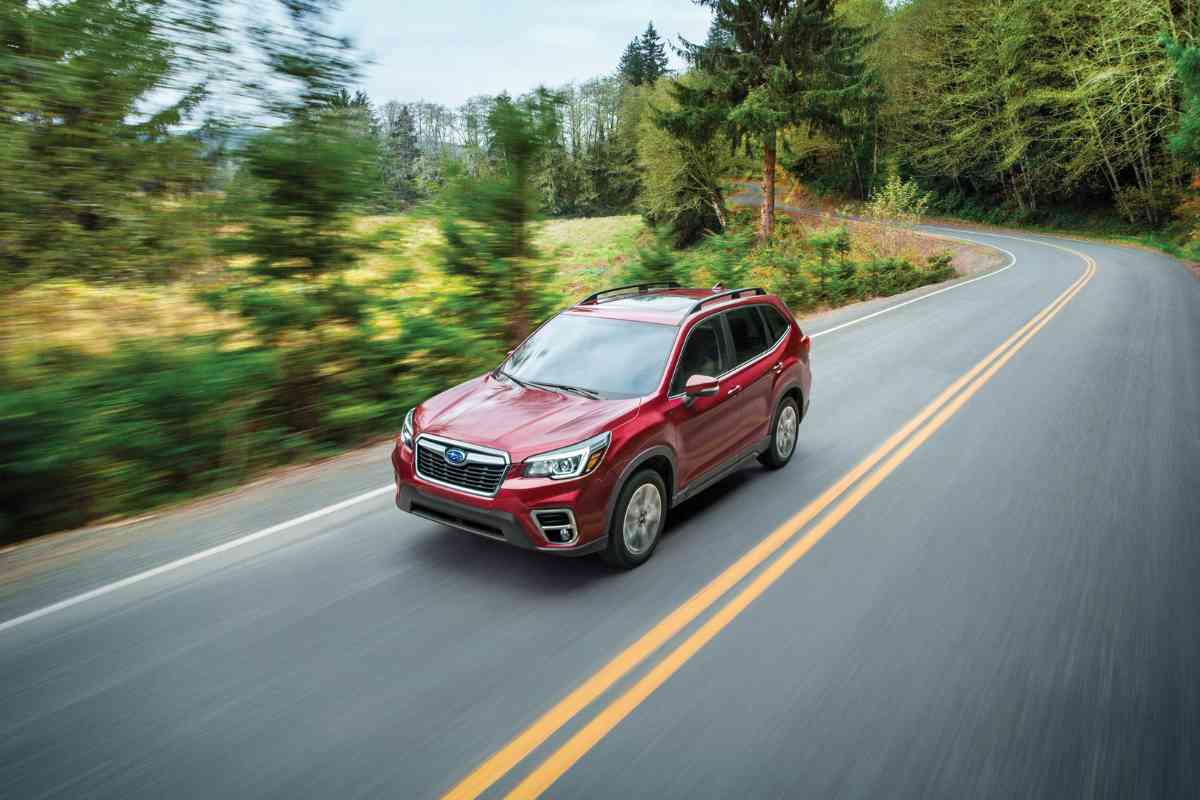Symmetrical AWD Explained: Your Guide to Balanced Traction
Symmetrical All-Wheel Drive (AWD) is a pivotal feature engineered by Subaru, serving as a foundation of stability and performance for vehicles in diverse driving scenarios. This innovative system evenly distributes power across all four wheels, ensuring consistent traction and enhanced handling.

Related Post! All-Wheel Drive Systems Explained!
What’s Symmetrical AWD?
Symmetrical All-Wheel Drive (AWD) is a distinctive system developed by Subaru that delivers balanced power distribution to all four wheels, optimizing vehicle traction and stability. Its design, featuring a longitudinally mounted boxer engine and symmetrical drivetrain, ensures even weight distribution, enhancing handling and performance across various driving conditions.
The strategic alignment of the drivetrain along the vehicle’s center grants exceptional balance and agility, proving invaluable in challenging weather conditions such as snow or rain.
The essence of symmetrical AWD lies in its design and engineering, which collectively foster a safer and smoother driving experience. A longitudinally mounted boxer engine, paired with a symmetrically designed drivetrain, minimizes vibrations and boosts stability. This configuration not only augments the vehicle’s responsiveness but also its safety, underscoring the technology’s significance for those valuing a secure and dependable ride.
In comparing symmetrical AWD with alternative drivetrain options, the system’s uniform performance across Subaru’s lineup distinguishes it as a top choice for drivers prioritizing reliability and control.
Essential Insights:
- Symmetrical AWD ensures evenly balanced traction and superior handling.
- It features a unique combination of a boxer engine and symmetrical drivetrain for enhanced stability.
- Subaru’s system is noted for providing consistent performance across its vehicle range.
Symmetrical AWD Explained:
Delving into the specifics of all-wheel drive systems, Subaru’s Symmetrical AWD emerges as a standout for its equilibrium and steadiness. Here’s an overview of its fundamentals:

AWD Defined:
All-Wheel Drive (AWD) systems utilize a complex arrangement of differentials to power all four wheels of a vehicle simultaneously, improving traction by dynamically allocating power where needed, particularly useful under slippery conditions.
Related Post! Is AWD Good For Rain?
Symmetrical AWD Overview:
Symmetrical AWD is defined by its balanced four-wheel drive layout, featuring a longitudinally mounted boxer engine and a symmetrical drivetrain that ensures equal weight and power distribution. This symmetry minimizes power losses in the drivetrain, offering a predictable and refined driving experience.
Historical Context:
For over five decades, Subaru has been perfecting its Symmetrical AWD system, initially distinguishing the brand in the automotive market with its boxer engine compatibility. Continuous enhancements in system components and electronic control have solidified Subaru’s Symmetrical AWD as a unique and enduring aspect of the brand’s heritage.
Design and Engineering
Within the domain of all-wheel-drive (AWD) systems, Subaru’s Symmetrical AWD distinguishes itself through a balanced design that optimizes power distribution, thereby enhancing the vehicle’s handling and stability.
Drivetrain Configuration
At the heart of Subaru’s Symmetrical AWD system lies a longitudinally mounted boxer engine, establishing a foundation for its evenly balanced design. This leads to a symmetrical drivetrain layout with equal-length half-axles on each side, creating a balanced power delivery to the wheels.
Optimized Power Sharing
This system ensures an even distribution of power, typically at a 50:50 ratio between the front and rear wheels. Adjustable based on road conditions and wheel traction, the system can redirect power to where it’s most needed, crucial for improving traction on various surfaces.
Enhanced Handling and Stability
The Symmetrical AWD system significantly betters driving dynamics through improved balance, minimizing the risk of oversteer or understeer for more predictable, responsive handling. Its stability is especially evident under adverse conditions, offering a more secure driving experience.
Related Post! Can AWD Go On Sand?
Performance Advantages
Exploring Symmetrical AWD reveals immediate benefits to driving performance, ensuring reliable grip and responsiveness in diverse conditions.
Improved Traction and Control
Continuously powering all four wheels, Symmetrical AWD significantly enhances traction, especially on challenging terrains, reducing wheel slip and boosting acceleration.
Off-Road Proficiency
Designed for balanced power distribution, Symmetrical AWD excels off-road, providing stable traction across rough landscapes. The system ensures that even if one or two wheels lose grip, the remaining wheels compensate, facilitating safer off-road navigation.
Adaptability in Adverse Weather
Symmetrical AWD adapts to changing weather, adjusting power distribution to maintain optimal wheel grip, enhancing vehicle reliability in rain, snow, or ice.

Comparing AWD Systems
Understanding the distinctions between AWD systems is essential when selecting a vehicle, as it influences driving experiences and suitability for specific needs.
Symmetrical vs. Asymmetrical AWD
Symmetrical AWD, such as Subaru’s, ensures balanced handling with even power distribution to all wheels, contrasting with asymmetrical systems that may prioritize power to certain wheels, potentially resulting in a less balanced driving feel.
AWD vs. 4WD
AWD systems, ideal for both on-road and mild off-road use, variably distribute power to enhance traction. Meanwhile, 4WD systems are tailored for more severe off-road challenges, with capabilities to lock power distribution for enhanced traction.
Electronic vs. Mechanical Coupling
AWD systems’ power management can vary; electronic coupling offers quick adjustments through sensors and controls, while mechanical coupling, utilizing gears and fluids, might offer durability but with potentially less immediate responsiveness.

Automotive Brands and Models
When delving into symmetrical all-wheel-drive (AWD) systems, understanding their diverse applications and implementation across different automotive brands is essential.
Subaru’s Approach to AWD
Subaru is celebrated for its Symmetrical AWD system, engineered to deliver power evenly to all four wheels, optimizing balance and traction. Vehicles like the Outback, Forester, and the performance-oriented WRX exemplify Subaru’s commitment to AWD excellence. This system’s balanced weight distribution is pivotal to the enhanced stability and handling Subaru vehicles offer.
Symmetrical AWD in Other Brands
Although the term “symmetrical” is uniquely associated with Subaru, other manufacturers have developed AWD systems with goals of balanced power distribution akin to Subaru’s. Audi with its Quattro system and BMW with xDrive, for instance, aim to provide similar traction and control improvements, adapting to changing driving conditions. While not labeled as symmetrical, these systems pursue comparable balance and performance advantages found in Subaru’s approach.

Related Post! Is AWD Better Than FWD For Towing?
Evaluating Consumer Impact
Opting for a vehicle with Subaru’s Symmetrical All-Wheel Drive involves considering its effects on your driving experience and associated costs.
Fuel Efficiency
While Subaru’s Symmetrical AWD offers better traction, it’s crucial to acknowledge that AWD vehicles generally use more fuel than their two-wheel-drive counterparts, attributed to the additional weight and complexity of powering all four wheels.
Maintenance and Longevity
AWD vehicles, including those with Symmetrical AWD, might face higher maintenance expenses due to their more complex drivetrains. However, with regular maintenance, the longevity and performance of Subaru’s AWD system can be remarkably good, emphasizing the importance of upkeep for preserving the system’s benefits.
Cost Versus Value
Vehicles equipped with Symmetrical AWD typically command a higher initial price than two-wheel-drive models. However, the investment secures a system renowned for enhanced traction and handling, especially valuable under challenging weather conditions. Furthermore, the resale value of AWD vehicles can be higher, potentially making this investment more appealing over time.
